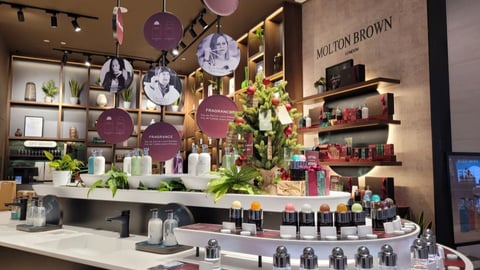Enhancing Conversational Commerce With CPaaS
Since the pandemic, consumers have become quite accustomed to omnichannel, with many interactions between the consumer and a human representative, chatbot, or both occurring through messaging apps like Facebook Messenger, WhatsApp, and WeChat — or voice technology like Amazon Echo.
This phenomenon is conversational commerce, and despite consumers' eagerness to shop through these apps, CPGs struggle to retain customer loyalty, as ongoing supply chain issues cause stocking problems and price hikes. However, by prioritizing the shopper's communication experience and understanding the customer more fully, CPGs stand to gain significantly.
A Single Omnichannel Communication Platform
When it comes to CPGs, shoppers primarily look for affordability — but beyond stock availability, there is still space within the communication paradigm for brands to innovate and differentiate themselves from competitors to strengthen loyalty. Most notably, consumers want convenient and pithy interactions when communicating with a brand. Shoppers do not want multiple agents telling them that they are unsure if a product is in or out of stock.
Leading CPG brands understand this reality and tailor their conversational commerce to ensure higher customer satisfaction, retention, and response rates. For example, some companies will send order confirmations through Facebook Messenger. Others will use chatbots to help customers resolve service issues or provide product information and updates on the latest discounts. More CPGs have likewise found success in regular customer surveys that test for shopper sentiment and behavior.
CPGs can unify the customers' often disjointed shopping experience via CPaaS (communications platform as a service). With CPaaS, a single omnichannel communication platform, businesses can reach their customers across multiple channels while providing a seamless communication experience powered by AI and automation.
How CPaaS Enhances the Two Pillars of Conversational Commerce
The two pillars of conversational commerce are messaging and calling, which CPaaS platforms offer in a cohesive form to boost customer retention and loyalty. Many consumers prefer to engage with companies through SMS over voice — especially millennials and Gen Z. With CPaaS automated SMS capabilities, CPGs can send messages on several topics, from marketing promotions and coupons to company updates and surveys. Similarly, businesses can send out promotional code delivery and customized offers based on omni-channel engagement. CPGs can also improve engagement with loyal customers by allowing shoppers to check rewards point balances and get updated account information via SMS conversations.
The second pillar, voice communication, is also made more efficient through CPaaS, which uses cloud-based call routing. CPaaS is particularly valuable for larger CPGs with multiple stores, as cloud-based call routing ensures calls get routed to the right store depending on the time of day or location for a localized customer experience. Plus, CPGs can use CPaaS to automatically send post-call surveys to capture feedback immediately and foster higher customer response rates. Moreover, companies can deploy self-service options powered by AI for SMS and voice. Shoppers can resolve simple issues such as updating account details or making changes to orders through the social application of their choice without having to go through a live agent.
Additional Omnichannel Benefits of CPaaS
In addition to CPaaS creating a more seamless experience through automated SMS solutions and 24/7 voice communication, it also adds social channels like Facebook Messenger, WhatsApp, etc., to the mix. Platforms that integrate multiple channels help businesses understand how their customers engage with their brand by using deep insights into user behavior. The customer experience can only improve if CPGs utilize shopper feedback; luckily, leading CPaaS platforms can provide data analytics and repositories of call recordings for analysis. And through CRM Integration, CPGs can use purchase data for customized upsell offers.
The Hybrid Shopping Experience Is Here to Stay
While customers will still physically visit stores, they have also come to rely on technology and digital platforms to augment their shopping behaviors in this post-pandemic era. And as inflation and supply chain issues persist, CPGs must do what they can to retain customers via an enhanced communication experience. Furthermore, regardless of how consumer preferences evolve, they will usually gravitate toward those hassle-free and time-saving experiences.
—Ujjval Karihaloo, Senior Vice President of Product Management, IntelePeer




